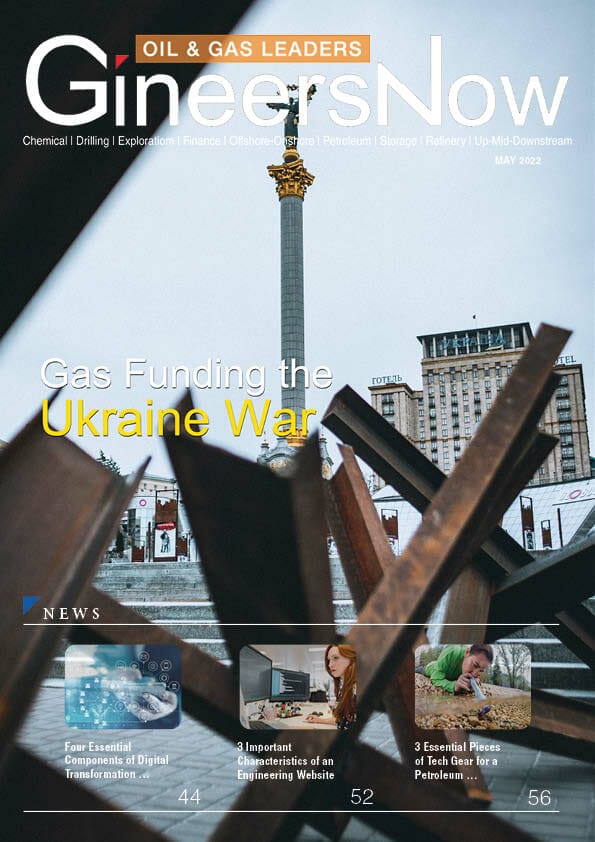Despite being united against Putin’s brutal invasion of Ukraine, Europe, and the United States continue to pay Russia upwards of $1 billion per day for oil and natural gas. As of January, Russia’s federal budget was 45% financed by taxes and tariffs associated with oil and gas. This led to gas funding the Ukraine war.
These contributions support a terrible war machine dedicated to the assassination of Ukrainian citizens, even when they are offered safe passage. Oil and gas from Russia are now as morally corrupt as blood diamonds.
If the U.S. takes the initiative and sets the example, western energy imports may be halted. If done correctly, the harm to Russia would be rapid and terrible, but the impact on the US and our allies’ energy expenditures would likely be little.
Russia presently exports an average of 5 million barrels of oil per day as part of a global market where prices fluctuate fast. It earns around $700 million per day from the export of crude oil and refined products. The European Union purchases more than half of this oil, while China purchases around a quarter.
The majority of Russian natural gas is exported through three pipelines: the Baltic, Ukraine, and Belarus. While some of this gas is contracted for long-term delivery, a significant portion is traded on spot markets. The European Union and the United Kingdom together purchase roughly 70% of Russian gas, while the United States purchases none.

Russia has militarized its gas supply during the past 12 months by reducing its sales to the spot market, therefore increasing prices and reducing the quantity of gas stockpiled in Western Europe. As a consequence, Germany’s gas reserves are depleted during this time of year.
US crude oil production was 11.3 million barrels per day; imports were 5.9 million barrels in 2020, the most recent year for which the US Energy Information Administration has comprehensive data. Russia contributed 540,000 barrels of crude oil, accounting for 9.2 percent of imported oil but only accounting for 3.1 percent of the country’s crude oil supply, as defined by the EIA. Russia’s percentage seems to have remained around the same in November 2021, according to the most recent monthly statistics.
Three possible strategies for an oil embargo exist.
In one scenario, the United States prohibits the purchase of Russian oil but takes no further action. American oil firms have the ability to transfer suppliers readily. Because oil prices are determined by supply and demand expectations in a global market, there would be a minimal direct influence if the US elected to purchase additional oil from Saudi Arabia, for example, while some current Saudi customers purchased Russian oil instead.

In this event, the US would owe no money to Russia, the global price of crude oil would remain constant, the price of gasoline at your neighborhood pump would likewise remain unchanged, and Russia would get the same income from other nations. This program may have symbolic significance, but it would be economically ineffective.
A second possibility is for the US to restrict crude oil imports from Russia and to impose “secondary sanctions” prohibiting any financial institution that does business in dollars from also supporting purchases of Russian oil elsewhere in the globe. Due to the fact that the oil market is denominated in dollars, these secondary penalties would have actual teeth.
No sanctions system is flawless, and the Russians may be able to sell all 5 million daily barrels, albeit at a significant discount. Shell purchased a cargo of Russian oil a few days ago for approximately $30 per barrel less than the market price for non-blood oil and now faces consumer boycott demands. Even the most dishonest consumers will press Russian oil sellers for larger discounts.

The worldwide supply of oil stays unchanged in this instance, but Russia loses money as a result of the blood discount. This might result in Russia receiving a price closer to the marginal cost of production in western Siberia, which is estimated to be $40 or less per barrel. Russian oil revenues might be reduced by up to half.
The price in the non-blood oil segment of the market may remain stable, and in that case, US gasoline prices are also unlikely to fluctuate much. Saudi Arabia and other OPEC members should ideally be encouraged to raise output if necessary to provide an extra buffer against interruption.
A third, more comprehensive option would be to prohibit crude imports, implement secondary penalties, and convince Europeans to reduce their gas use. European countries have a challenge since they cannot simply switch from pipelines to alternate sources of supplies, but Russia also has a challenge because virtually all of its gas cannot be diverted to non-European markets.

Certain European nations may need foreign financing to upgrade their equipment, increase their reliance on renewable energy, and purchase liquefied natural gas from sources other than Russia. The International Monetary Fund has the ability to make loans at attractive interest rates. Germany will fund the move away from Russian gas on its own. Other countries, such as Italy, may face worse difficulties. It is critical for the EU to be generous in assisting its members in implementing this shift.
Russian oil income would plummet in this scenario, as would it’s gas revenues. Payments for oil would barely cover production expenses, leaving the government budget with little money. Daily gas costs should also decrease significantly. As Europe’s climate warms, reaching zero imports of Russian gas may be relatively feasible.
Read GineersNow Oil & Gas Magazine for FREE
Editor’s Note
Gas Funding the Ukraine War
Since Russia invaded Ukraine two months ago, the United States, the European Union, and its allies have launched an economic counteroffensive that has deprived Russia of hundreds of billions of dollars in its own currency and blocked a significant portion of its worldwide business. Over 1,000 businesses, organizations, and people have been sanctioned, including members of President Vladimir V. Putin’s closest circle.
But Putin cautioned the world that he has economic weapons that he may use to inflict pain or deter an attack.
This is the reliance of the US and Europe on Russian gas, which prompted both powers to exclude gasoline imports from the severe sanctions they placed on Russia at the start of the conflict. Russian oil exports account for approximately 5 million barrels per day as part of a volatile worldwide market. Exports of crude oil and refined products bring in about $700 million per day. Around half of this oil is acquired by the European Union, while about a quarter is acquired by China. As of January, nearly half of Russian tax revenues are derived from oil and gas.
This money assists Russia in financing its military operations and mitigates the effect of sanctions. The conflict has compelled democracies to diversify their exports away from Russia. They’ve recommended halving natural gas supplies by next winter and eliminating them entirely by 2027. According to experts, these targets may be unduly ambitious.
That money helps Russia to fund its war efforts and blunts the impact of sanctions. The war has prompted democracies to move away from relying on Russian exports. They’ve proposed cutting natural gas deliveries by two-thirds before next winter and to end them altogether by 2027. Those goals may be overly ambitious, experts say.
A possible oil embargo can be approached in three ways. One scenario involves the U.S. banning the purchase of Russian oil but doing nothing else, so the U.S. pays nothing to Russia, but Russia receives the same revenue from other countries. As a second option, the U.S. may decide to ban oil purchases from Russia and impose “secondary sanctions” that would prohibit all financial institutions doing business in dollars from also facilitating the purchase of Russian oil globally. The third and most comprehensive solution would be to ban crude purchases, impose secondary sanctions, and convince Europeans to buy less gas.
In any scenario, switching to other providers and, ultimately, to more renewable energy sources would be costly and difficult.











